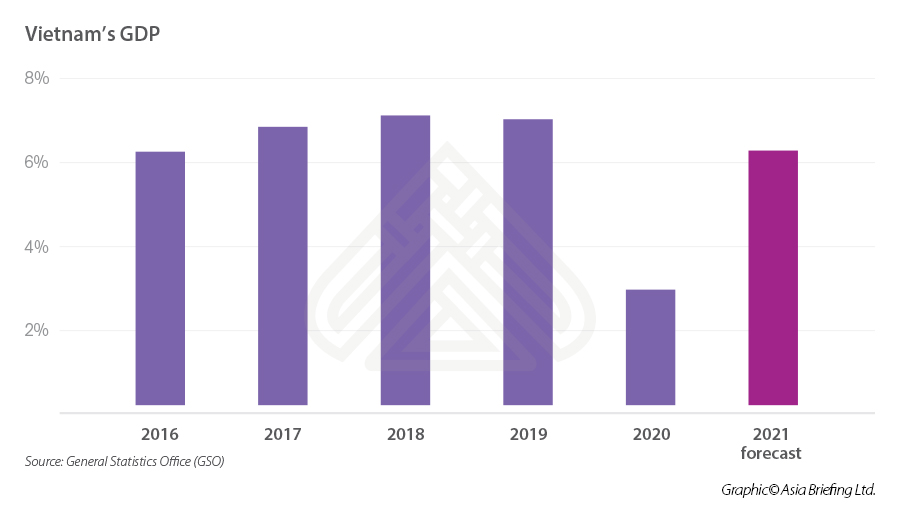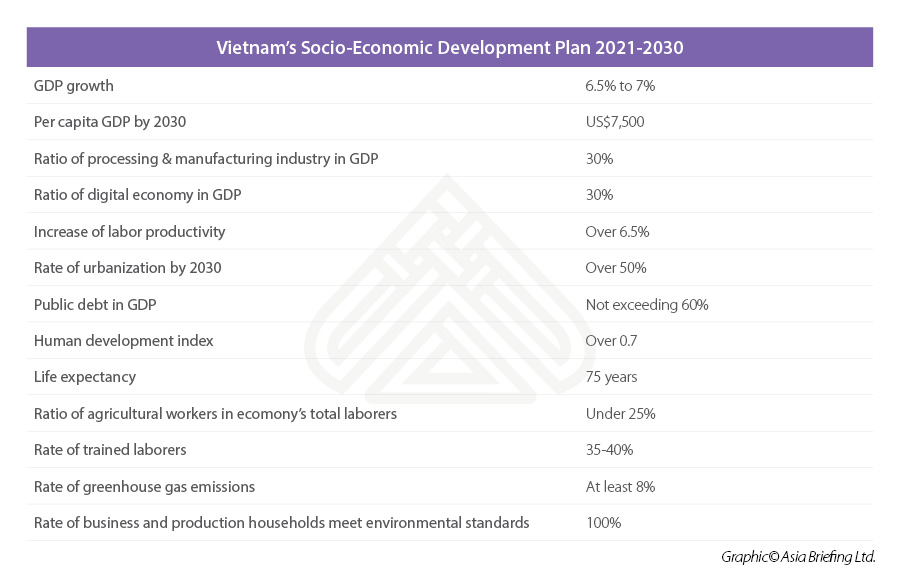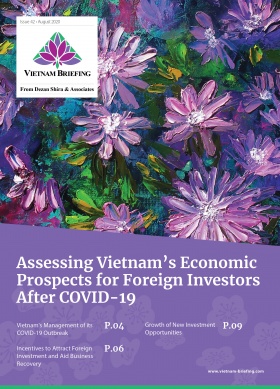Vietnam’s Economic Growth On Track as National Party Congress Concludes
Vietnam has reiterated its commitment to high economic growth following the conclusion of the National Party Congress in Hanoi where it chose its leaders for the next five years.
Vietnam’s ruling Communist Party approved plans to raise growth to 6.5 to 7 percent for the 2021-2025 period as it aggressively pushes for reforms and high-tech growth.
Vietnam is set to become more selective in attracting FDI as it wants to move up the value chain from a low-cost labor destination to a center for hi-tech industry keeping the environment in mind.
The government also aims to diversify its export markets taking advantage of its several signed free trade agreements.
Vietnam’s 13th Communist Party of Vietnam Central Committee reelected Nguyen Phu Trong as the General Secretary. Trong is known for his anti-corruption stance and has endorsed Vietnam’s continued integration into the global economy. These policies are expected to continue and as such underlines Vietnam’s stable political environment which businesses have been drawn to.
Economic blueprint calls for high growth, doubling of per capita GDP
The National Party Congress approved a 10-year socio-economic plan that calls for private companies to account for more than half of the economy by 2025 up from 42 percent at present. The plan also calls for doubling per capita GDP to US$4,000-5,000 by 2025 from US$2,750 at the end of 2020.
Vietnam has benefitted from the US-China trade war, ramping up manufacturing, attracting foreign investors, and increasing exports to the US. The country’s GDP remained robust at 7 percent, the highest in Southeast Asia in 2019, and in 2020 was one of the few countries to record net positive growth at 2.9 percent after Taiwan but beating China despite the pandemic.
While this type of growth would be the envy of other governments, it was one of the worst years in decades for Vietnam as it attempted to control the pandemic.
Nevertheless, Vietnam’s successful containment of the pandemic made foreign investors notice. Several suppliers have moved production to Vietnam with companies like Intel further expanding investment.
The pandemic has speeded this up, with manufacturers not wanting to rely on just one singular market. Rather, Vietnam has been on the minds of most investors such as Apple, LG, and Panasonic diversifying their manufacturing operations to the country. This, however, has resulted in increased costs at industrial zones and office space rents.
Digital economy and manufacturing priority for government
In its socio-economic plan, the government has prioritized the growth of the digital economy and manufacturing. These two industries have shown continued growth and present the future pillars of the economy. We highlight them below:
Digital economy
The pandemic is pushing digital transformation in Vietnam. Vietnam’s digital economy is expected to reach US$52 billion in 2025. This rapid growth is underpinned by a broader digital transformation in the country. Vietnam’s National Programme for Digital Transformation is aimed at ensuring more than 80 percent of households have access to fiber-optic infrastructure by 2025.
The program also entails that the digital economy forms 10 percent of every sector which could result in annual productivity increases of 7 percent. The COVID-19 pandemic has helped this transformation through a permanent and significant digital adoption spurt, with more than one in three Southeast Asian digital service consumers (36 percent of digital consumption in Southeast Asia) new to the service. Sub-sectors likely to achieve significant growth include e-commerce, digital financial services, and online gaming.
Manufacturing and processing
The pandemic forced 15 percent of manufacturing companies to cut production, with garment and textile industries hit the hardest, directly impacting 2.8 million workers. Nevertheless, it also forced companies to diversify their input sources and look at new business lines. For example, several garment factories realigned their business to produce face masks, which remain in demand. In September 2020, the government issued an action plan implementing Resolution No 23/NQ/TW with six main goals.
Those goals include plans that manufacturing and processing will account for 30 percent by 2030 with the value proportion of high-tech production from the manufacturing and processing industries reaching at least 45 percent. In addition, as Vietnam is part of several free trade agreements it has to ensure that any product it manufactures is sufficiently processed within its border to qualify for tariffs. While Vietnam’s PMI has fluctuated in recent months, the government remains committed to the industry and remains keen on high-tech manufacturing becoming a hub for big businesses.
Vietnam’s development plan promising but implementation is key
Having controlled the pandemic so far, despite an outbreak recently, the government seems on course to maintain growth and recover economically from the pandemic. With the National Party Congress approving the economic plan for the next 10 years, Vietnam is expected to further improve its business and investment climate. While this will require effort from the government to implement plans and speed up the divestment of state-owned enterprises (SOEs), Vietnam has the tools and resources to do so.
Nevertheless, before sizing up Vietnam as a potential investment destination, investors must do their due diligence and consider several factors such as location, raw materials, and sourcing partners. For now, Vietnam has enough push factors to encourage businesses to relocate.
About Us
Vietnam Briefing is produced by Dezan Shira & Associates. The firm assists foreign investors throughout Asia from offices across the world, including in Hanoi and Ho Chi Minh City. Readers may write to vietnam@dezshira.com for more support on doing business in Vietnam.
- Previous Article Why Vietnam’s Public Investment Plan Matters for Investors
- Next Article How Our Business Matchmaking Services Can Help Your Vietnam Market Strategy









